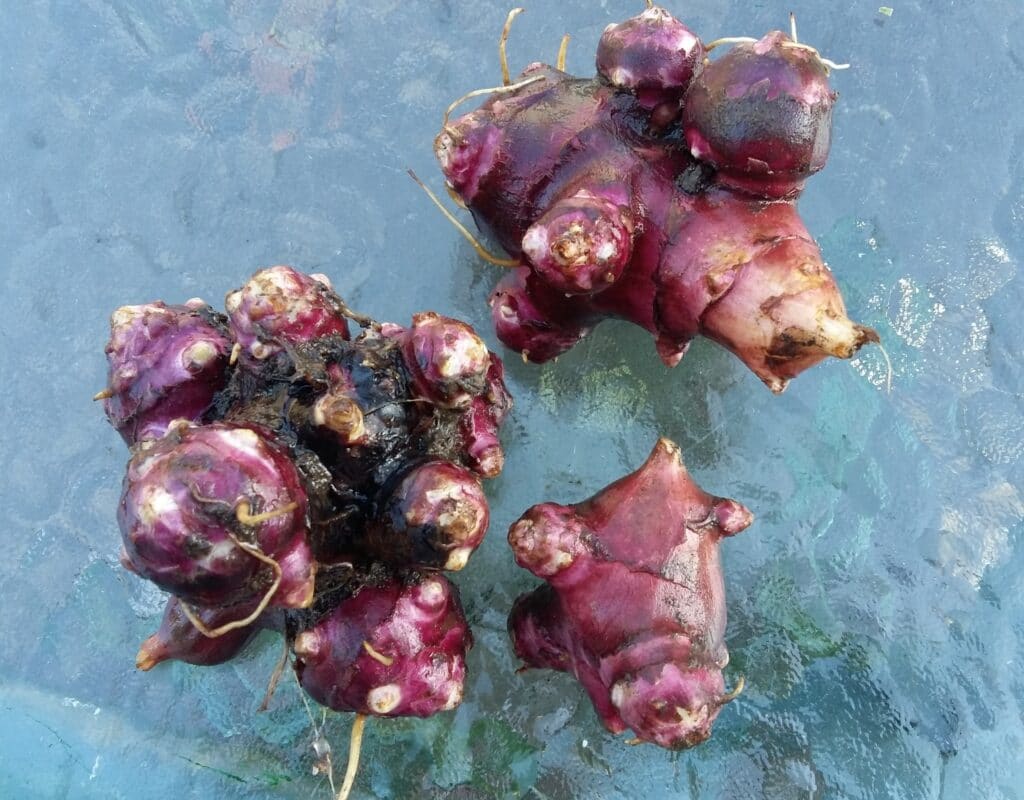Why You Should Grow Jerusalem Artichokes This Fall (Or Next Spring!)
Looking for a healthy alternative to potatoes that’s easy to grow, low-maintenance and suitable for those with dietary restrictions? Look no further than the Jerusalem artichoke!

Also known as sunchokes, Jerusalem artichokes are hardy native Canadian perennials that can quickly get established in your garden patch. They are giants, growing sometimes 3 metres in height, topped by a cheerful yellow sunflower-like blossom. It’s the base of the plant, though, that contains the potato-like tuber renowned by indigenous folks in Canada well before the arrival of Europeans—the newcomers called them “Canada Potatoes”. Like potatoes, JA’s can be eaten boiled, baked, fried, in soups or stews or raw in salads.
The University of Saskatchewan’s College of Agriculture and Bioresources webpage informs us of a somewhat unique feature of the Jerusalem artichoke, which makes it a good dietary choice for those with diabetes: “Moderate amounts of Jerusalem artichokes can be consumed without any serious increase in blood glucose levels [unlike potatoes]. The tubers contain no starch. On the contrary, carbohydrates are stored as inulin. In the digestive tract, inulin cannot be digested by humans. This inability to be digested leads to the major disadvantage of eating Jerusalem artichokes; flatulence.” This is doubtless where the plant got its unfortunate nickname, “Jerusalem Fartichoke”! Oh well, nobody’s perfect!
In spite of this drawback, devotees of the JA prize it for its flavour and ease of growing—the plant is well-adapted to the Canadian climate and has no major insect predators. Just like garlic and spring bulbs, you can plant JA’s in the fall or early in the spring, once the danger of frost is over. Harvest them around Thanksgiving or later, and store them in a cold room or in your fridge crisper in a paper bag. Don’t wash them before storing, or you’ll nick the delicate flesh, hastening spoilage.
I don’t bother peeling these knobby customers—just like potatoes, you can boil or bake with the skins on.
A trick for removing the gas from JA’s before consuming: boil slices of the tuber in lemon juice, which converts the inulin to a more digestible sugar. When it’s soft, you can put it in a blender with garlic, olive oil and some nutritional yeast flakes for a healthy, homegrown chip dip.
Happy growing—and munching!